Francisco Paisana
Radio Access Technology Characterisation Through Object Detection
Jul 27, 2020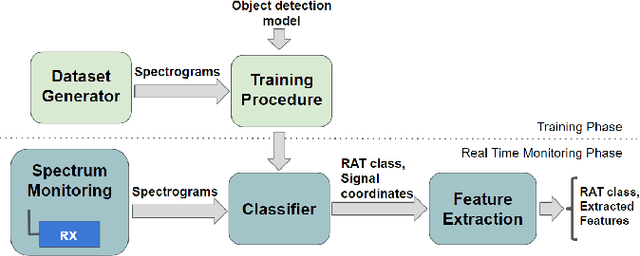
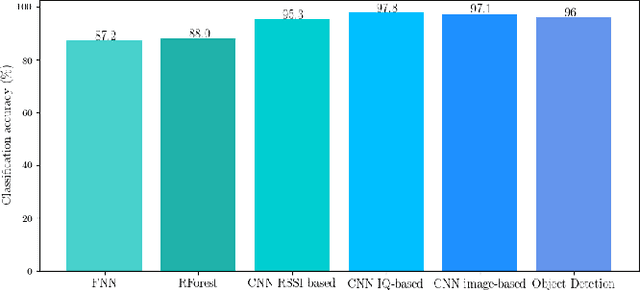
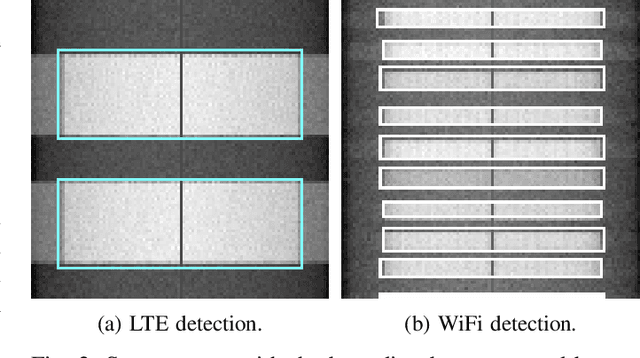
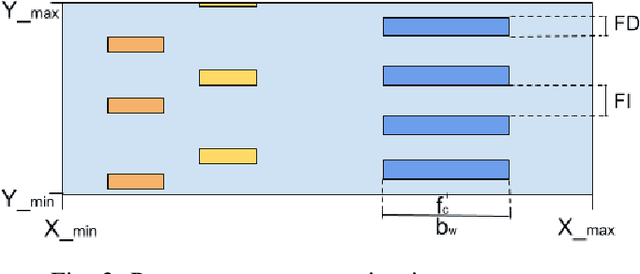
Abstract:\ac{RAT} classification and monitoring are essential for efficient coexistence of different communication systems in shared spectrum. Shared spectrum, including operation in license-exempt bands, is envisioned in the \ac{5G} standards (e.g., 3GPP Rel. 16). In this paper, we propose a \ac{ML} approach to characterise the spectrum utilisation and facilitate the dynamic access to it. Recent advances in \acp{CNN} enable us to perform waveform classification by processing spectrograms as images. In contrast to other \ac{ML} methods that can only provide the class of the monitored \acp{RAT}, the solution we propose can recognise not only different \acp{RAT} in shared spectrum, but also identify critical parameters such as inter-frame duration, frame duration, centre frequency, and signal bandwidth by using object detection and a feature extraction module to extract features from spectrograms. We have implemented and evaluated our solution using a dataset of commercial transmissions, as well as in a \ac{SDR} testbed environment. The scenario evaluated was the coexistence of WiFi and LTE transmissions in shared spectrum. Our results show that our approach has an accuracy of 96\% in the classification of \acp{RAT} from a dataset that captures transmissions of regular user communications. It also shows that the extracted features can be precise within a margin of 2\%, %of the size of the image, and is capable of detect above 94\% of objects under a broad range of transmission power levels and interference conditions.
Spectrum Monitoring for Radar Bands using Deep Convolutional Neural Networks
May 01, 2017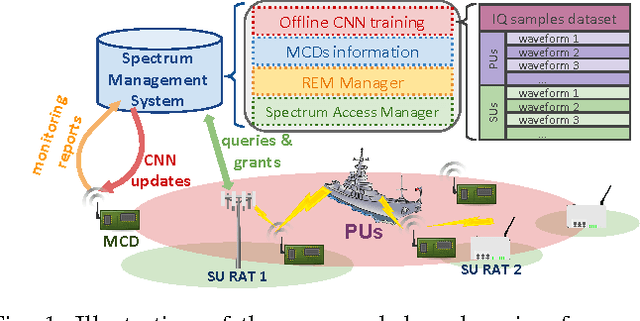
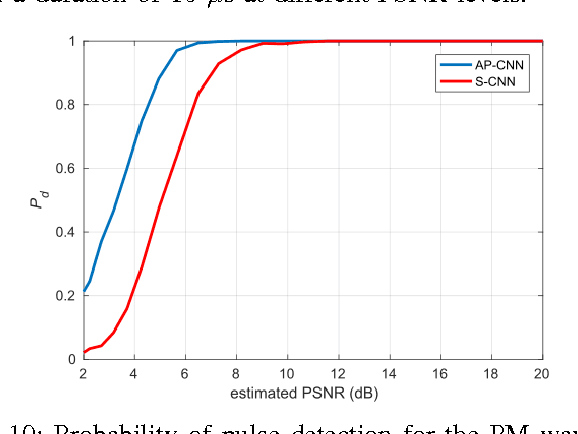
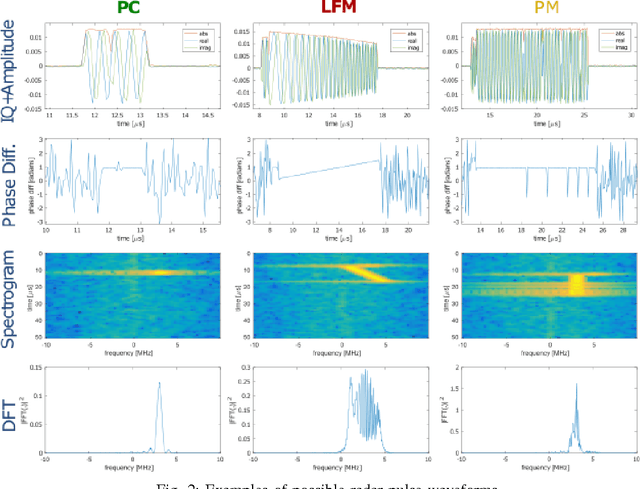
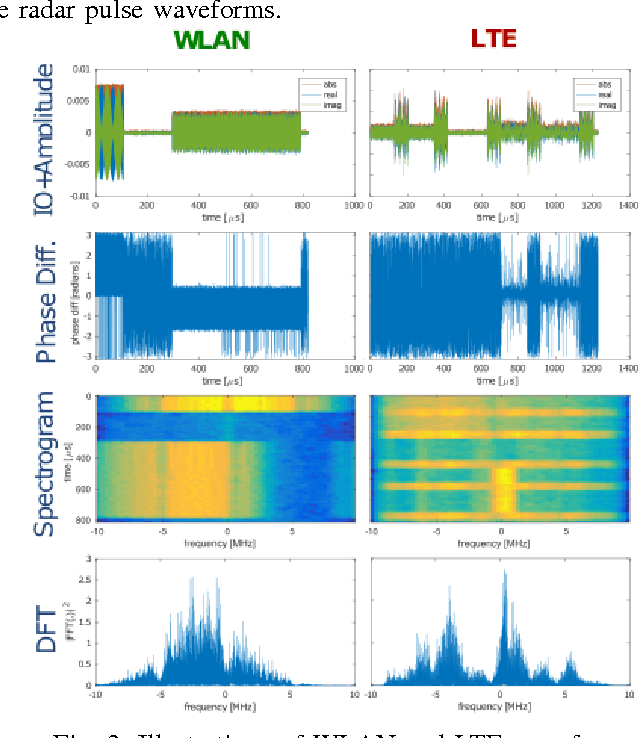
Abstract:In this paper, we present a spectrum monitoring framework for the detection of radar signals in spectrum sharing scenarios. The core of our framework is a deep convolutional neural network (CNN) model that enables Measurement Capable Devices to identify the presence of radar signals in the radio spectrum, even when these signals are overlapped with other sources of interference, such as commercial LTE and WLAN. We collected a large dataset of RF measurements, which include the transmissions of multiple radar pulse waveforms, downlink LTE, WLAN, and thermal noise. We propose a pre-processing data representation that leverages the amplitude and phase shifts of the collected samples. This representation allows our CNN model to achieve a classification accuracy of 99.6% on our testing dataset. The trained CNN model is then tested under various SNR values, outperforming other models, such as spectrogram-based CNN models.
 Add to Chrome
Add to Chrome Add to Firefox
Add to Firefox Add to Edge
Add to Edge